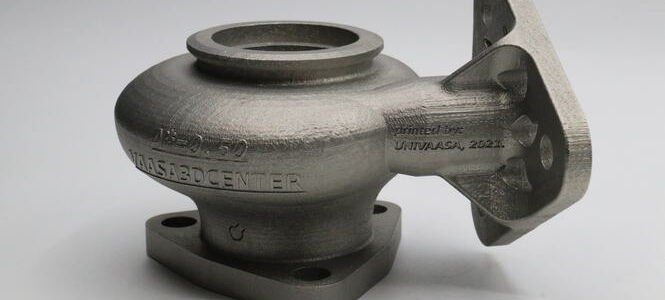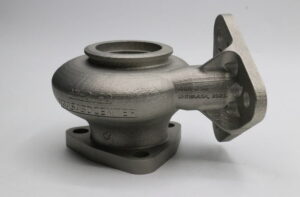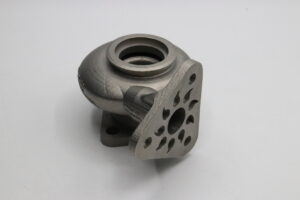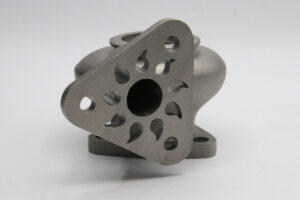10/02/23

Among the great benefits of metal additive manufacturing there is undoubtedly the possibility of rapidly prototyping complex parts. Indeed, thanks to additive manufacturing, a component can be designed, printed, and tested much more quickly and precisely than with traditional technologies.
In this way, various phases of the product development process are eliminated, with a drastic reduction of errors, thanks to increasingly advanced control systems which, layer by layer, monitor the entire production process to guarantee the final quality of the component.
Thus, the time that passes from the idea to its realization is shortened, prototyping times are reduced, and this allows you to test new variants and customizations in a short time and with less effort.
The project developed by the University of Vaasa fits into this line. The University of Vaasa is a multidisciplinary and business-oriented university that is part of the Prima Open Additive network, collaborating with Prima Additive in the development of additive manufacturing in Finland.
With its research laboratory, the University of Vaasa provides local companies with all the advice they may need to approach additive manufacturing, allowing them to develop their own applications on site, thanks to the availability of different equipment, including the Print Sharp 250 by Prima Additive.
Among the companies that have turned to the University’s application center is Finno Energy, a Helsinki start-up that has developed an innovative design for a gas turbine combustion chamber, which improves overall efficiency by reducing fuel consumption and, consequently, carbon dioxide emissions into the atmosphere.
The turbine designed by Finno Energy is suitable not only for automotive engines, but also for those for the aeronautical sector, industrial turbines and for energy production. Furthermore, the design of this turbine has been tested to work with alternative fuels, such as hydrogen and biofuels.
The project carried out by Finno Energy in collaboration with the University of Vaasa involves the redesign of a turbocharger. Among the requirements there were mainly the need to keep the heat inside the volute and to resist a pressure of 20 bar. Furthermore, the choice of the most suitable material had to be functional to the fact that the piece works at temperatures of around 1055° C, therefore it must have functional thermal resistance characteristics to withstand these temperatures.
Based on these criteria, the application study started from the exploration of different design strategies, trying to understand if a modular design was more functional or whether to produce the whole component in a single piece. Precisely by virtue of the possibility of creating a single piece without the need for subsequent assembly, as well as the possibility of making a more functional shape, it was decided to proceed using metal additive manufacturing.
Once the technology was identified, more details related to printing were analyzed such as the height of the layer, the orientation of the piece on the printing plate and the design of the necessary supports.
Metal additive manufacturing has proved to be the most convenient technology because it has made it possible to apply a reticular structure inside the component, commonly known as a lattice structure, which makes it possible to reduce the weight of the component and, at the same time, to favor the thermal insulation. Furthermore, thanks to this technology, it has been possible to greatly reduce both the total prototyping time and the production cost of the part, compared to the use of traditional technologies.
Through a traditional casting process, in fact, it would have been possible to create a similar component, but without such a complex structure inside and with much higher costs and construction times, since it would have been necessary to create ad hoc molds, with a substantial economic outlay and waste of time, not counting the long post-treatment phases.
Before reaching the final product, several tests were carried out both through digital simulation systems and through printing tests. It is precisely in the design testing phase that the additive advantage further emerges, since each modification to the file can be made in a short time and, unlike traditional technologies, does not require new molds or different tooling.
Thanks to the use of Inconel 725 in the additive process, the mechanical properties and surface characteristics of the component proved to be in line with the requests; therefore, the piece made is ready for use as soon as it comes out of the machine, with no need for subsequent treatments.



Using Prima Additive’s Print Sharp 250, which boasts a working volume of 258x258x330 mm, it was possible to create one of these components in about 84 hours.
Finno Energy, thanks to the support of the University of Vaasa, will continue the research on this type of components in the near future, trying to analyze how to further improve the functions of the component through the topological optimization of the design, trying to increase the thermal insulation and to further reduce the weight and the manufacturing time of the component.
This case demonstrates how, thanks to additive manufacturing, it is possible to create and test prototypes with an optimized design much faster than with traditional technologies. Since this technology is strongly driven by application cases, Prima Additive is always available directly or through its network of Prima Open Additive Labs to support those who want to approach additive manufacturing by helping companies validate their applications and exploit the full potential of this technology.